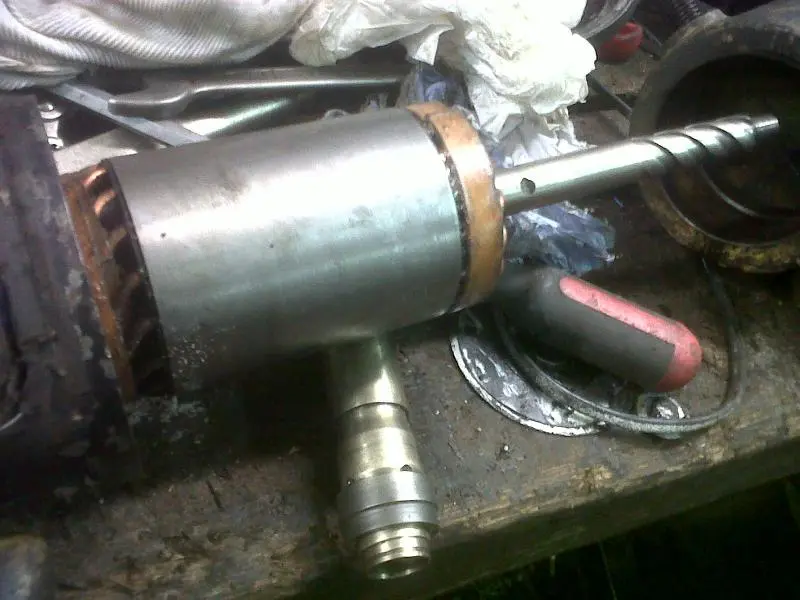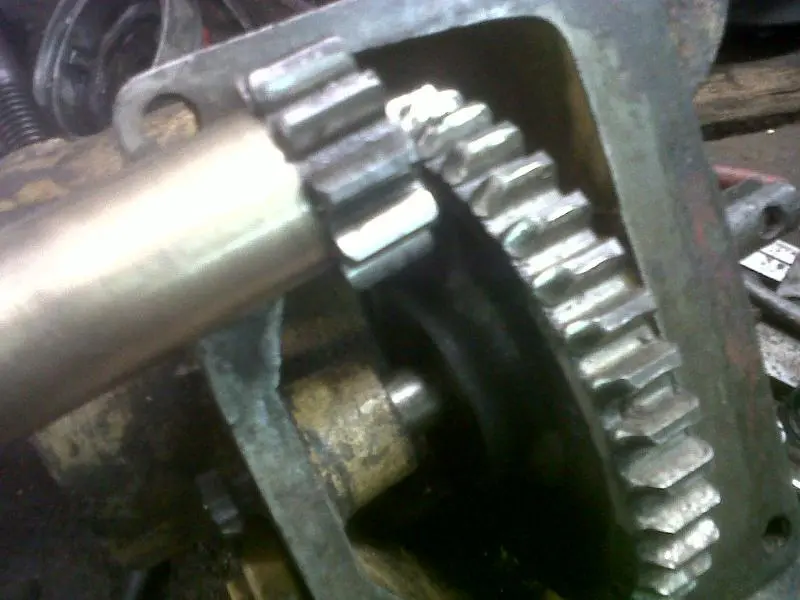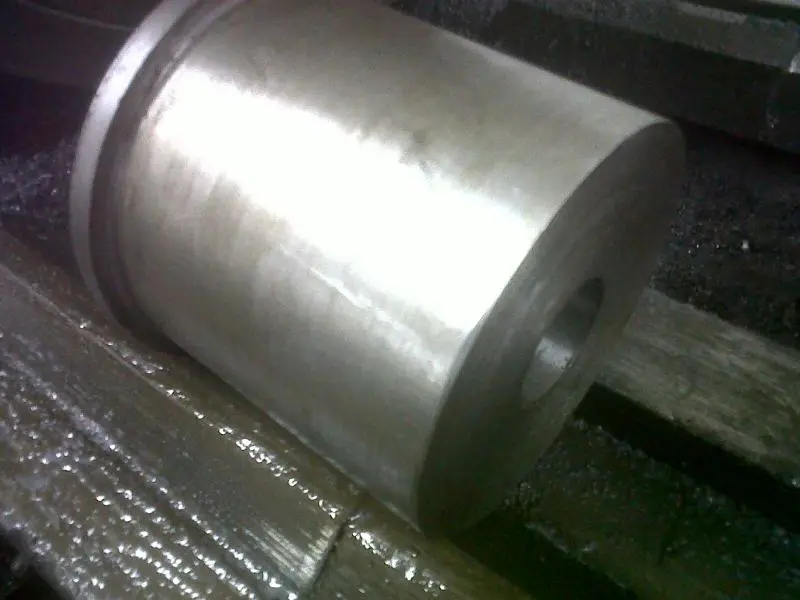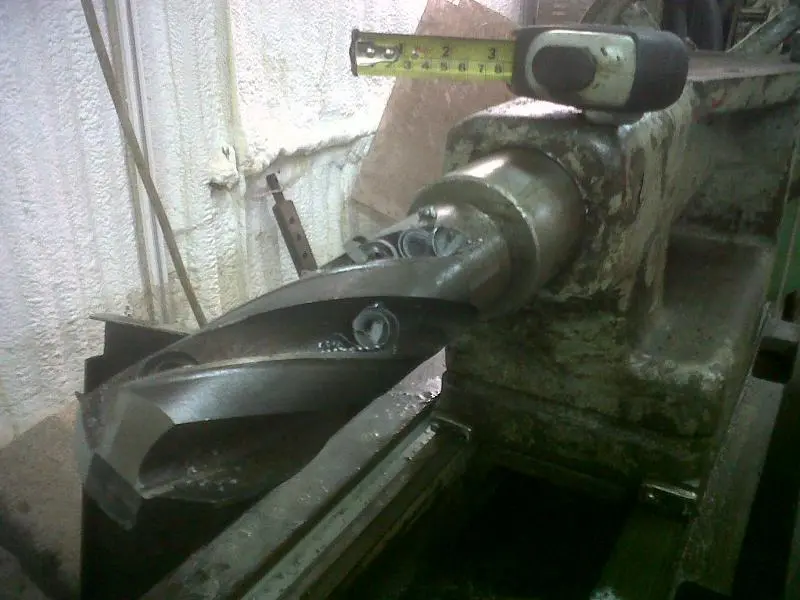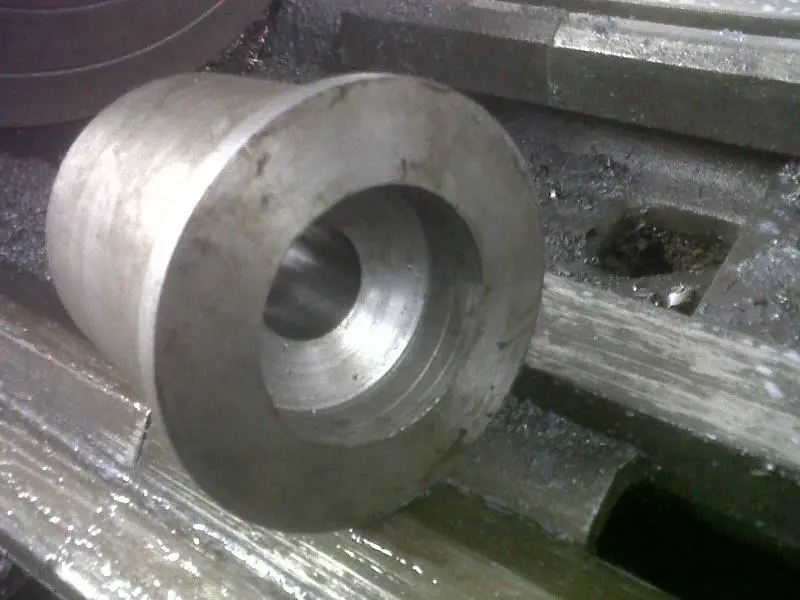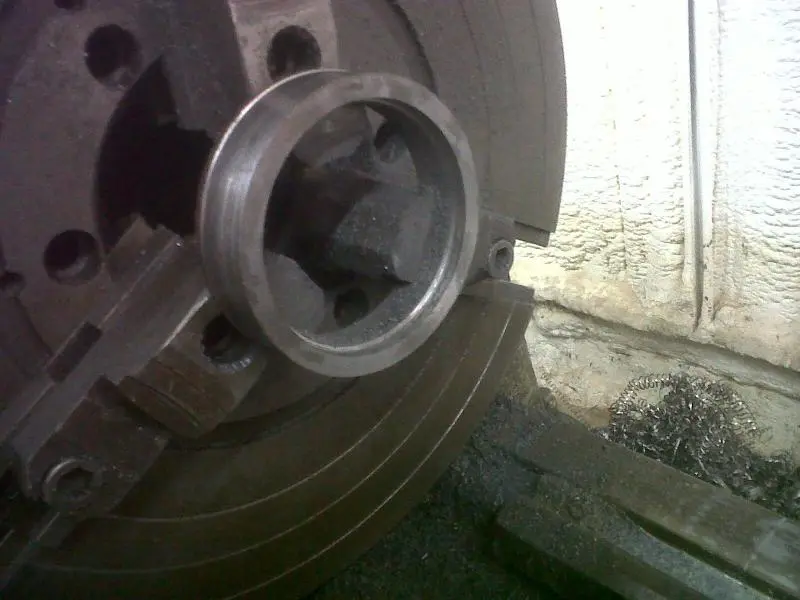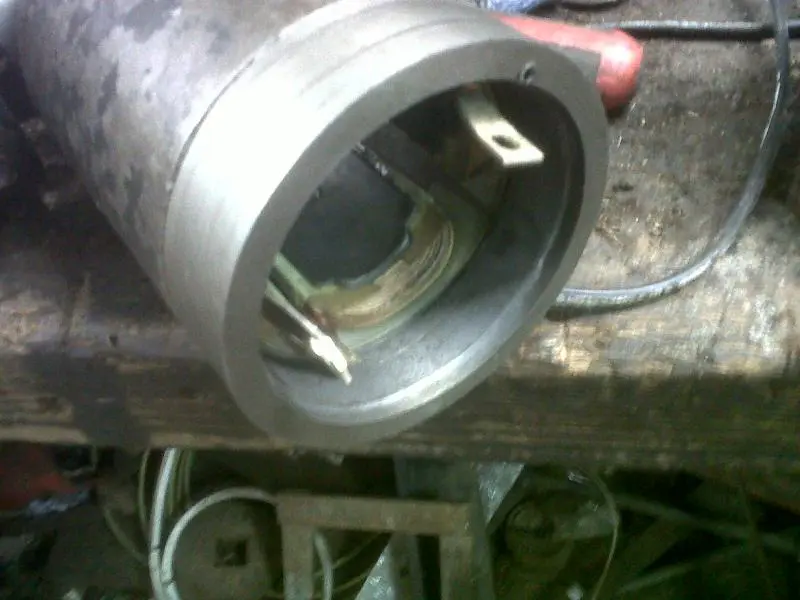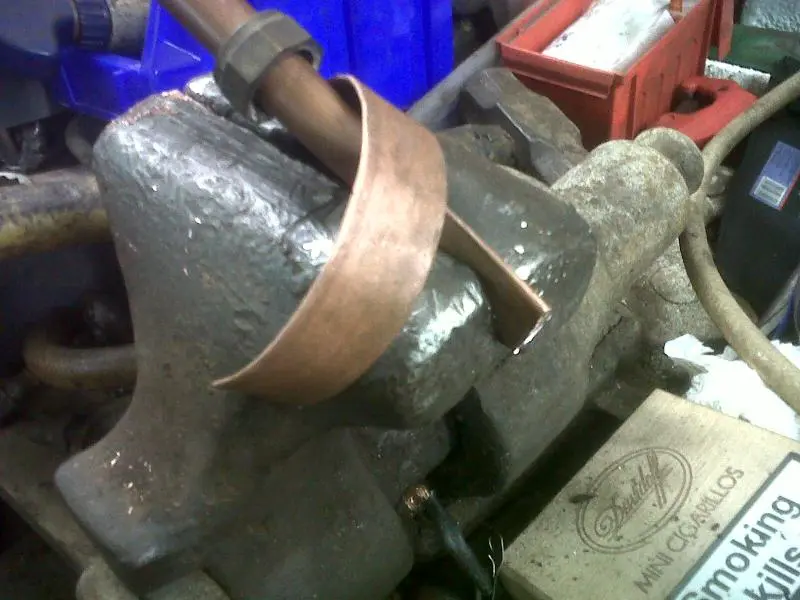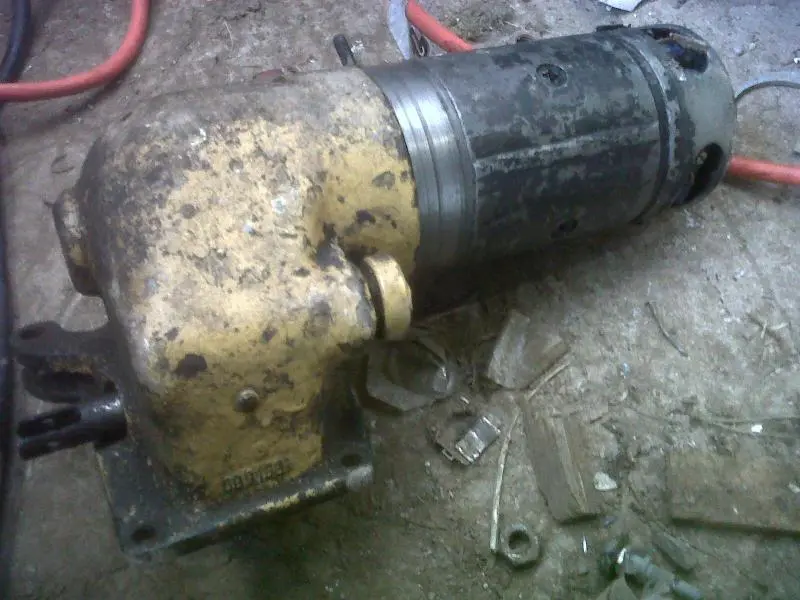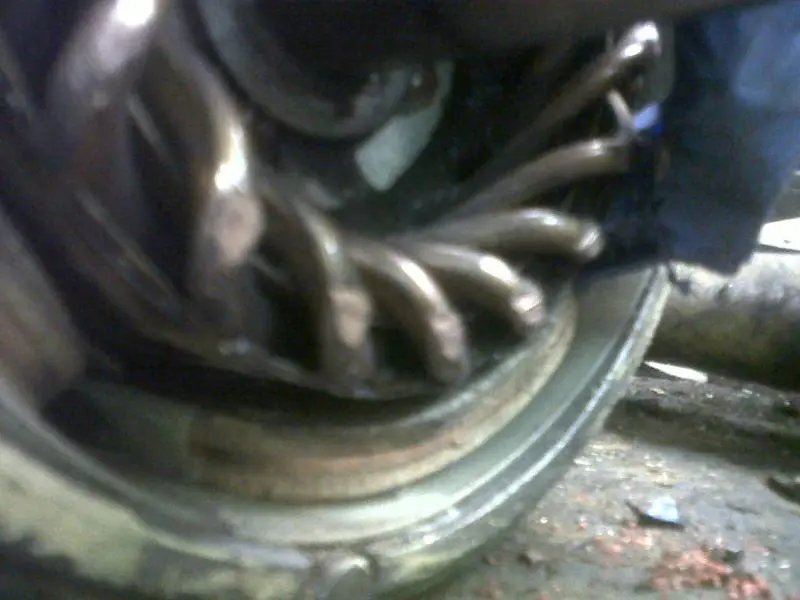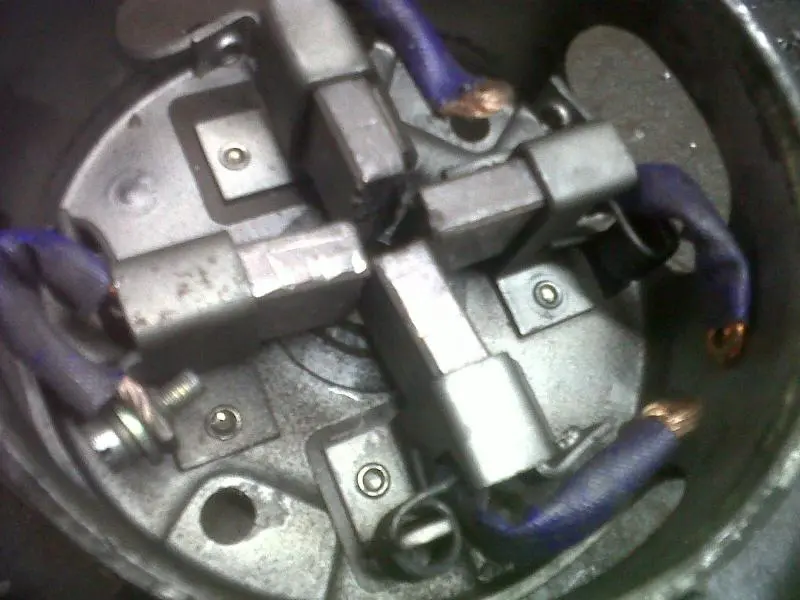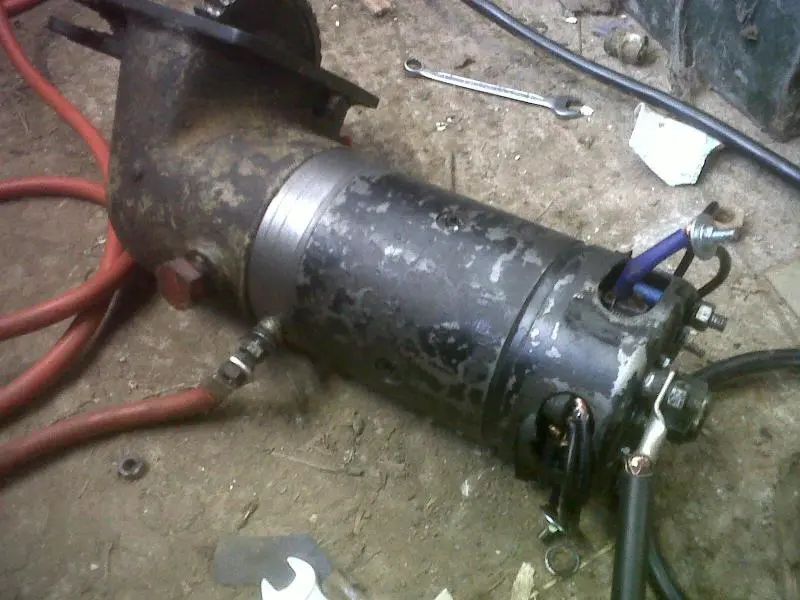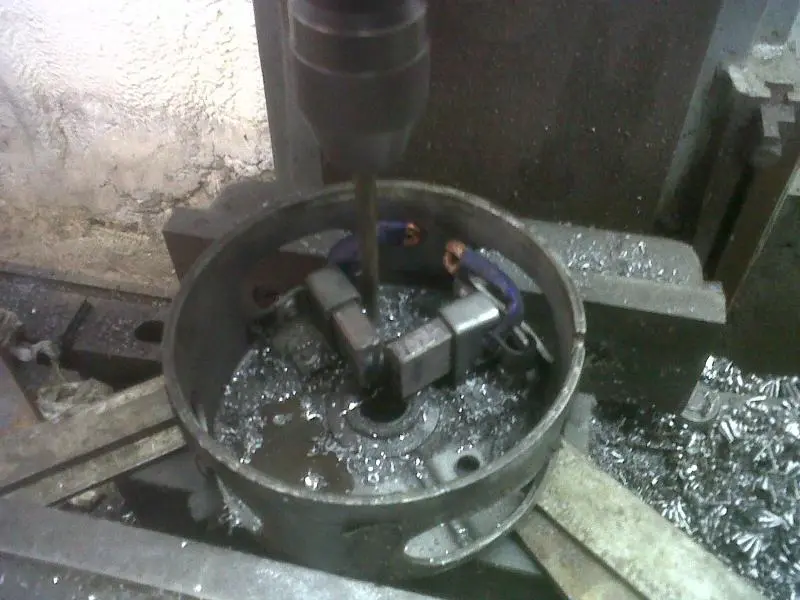Having got tired of swinging the pony, or donkey as we call them, I decided to look for an electric start. I didnt want a direct electric start, a) not original enough, b) the secret of long life of these big cats is that slow steady start up procedure that the donkey forces you to do. The donkey motor had been getting more and more troublesome, a number of people around the yard now have nasty scars on the backs of their hands where the handle has kicked back and flung the hand back into the main exhaust pipe. Even when everything goes according to plan, balancing up on top of the track and pulling towards you is somewhat precarious. I have twice had the thing go easier than expected, pulled too hard and fallen over backwards off the track. For the last couple of years it seems that donkey had been getting more and more vicious and cantankerous and nobody wanted to go near it. We have been bump or tow starting the 7 most of the time. Which is all very well but a) you dont always have another big tractor handy and b) I'm not sure that a sudden start like that is good for the main engine.
I knew that Cat had made an electric start attachment for the donkey, with a 6v motor, but just couldnt find one here in England. My guess is that because most of the D7's of that era over here were 4t's, the military version, they probably never had the luxury of electric start. I posted a wanted ad on the ACMOC BB and Josh Latkin kindly provided and shipped it from the USA. All he had was the gear mounting casting and the ring gear, but this was a great start.
[attachment=8377]d7%20pony%20gear.jpg[/attachment]
Now it was just a simple matter of finding a starter to fit. Hmm, not that simple. That intermediate ring gear is a long way into that housing; so I had to find a starter with a long shaft, the right end gear and a housing that could be adapted to fit. Plus I needed to check direction of rotation. At first I worried about the fact that the extra gear would mean a reverse rotation of the starter to a normal engine layout, but then again the fact that this gear enters the flywheel from the oppsite side to most starters (it faces into the engine flywheel, rather than coming at it from alongside the engine) would cancel this out. (more on this later).
So I searched through all the old starters from the scrap heap and other dusty areas of the workshop and sheds that I could find. This was just the final shortlist from over 20 contenders:
[attachment=8378]IMG00436-20110302-1845.jpg[/attachment]
Having found one with the right end gear, seemingly the right rotation, and a small diameter that could be worked down into the housing it was disappointing to find that it was completely burnt out when I tested it. The second runner had the right gear, a long shaft and it worked. But the housing was all wrong. This means I am going to have to make a new nose cone and components in order to fit it. I dont need a bendix spiral on the starter, and dont need any form of solenoid to help throw the starter gear into the ring. The CAT part intermediate gear is on a sliding shaft and is evidently pushed into contact with both the staretr and the ring gear by a hand operated lever. This helps me to gain some of the extra reach on the starter shaft that I need, I can push the starter gear to end of its bendix and fix it out there.
Here is the starter motor gear on the left and the CAT intermediate gear in its housing on the right, a good match:
[attachment=8381]IMG00435-20110302-1842.jpg[/attachment]
Stripped the motor down to reveal the entire shaft and the bendix spiral on it, if I can make a new front end casing for it to enclose that shaft and house a bearing, at 4" diameter, it will slide down into the CAT housing and I can fix that end gear in the right place to mesh with the intermediate gear.
[attachment=8380]IMG00434-20110302-1841.jpg[/attachment]
The start of machining the new end piece that will replace the existing flange on the starter and allow it to slide down into the 4" circular housing of the CAT part; more to come.
[attachment=8379]IMG00430-20110302-1806.jpg[/attachment]
Nick



